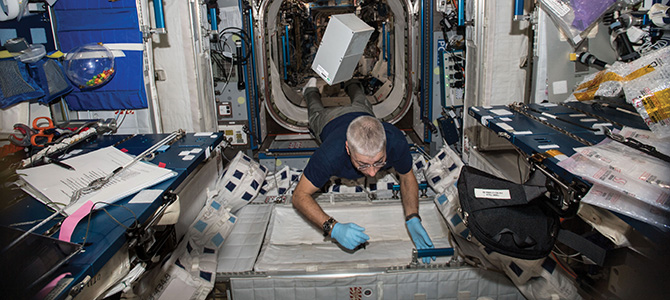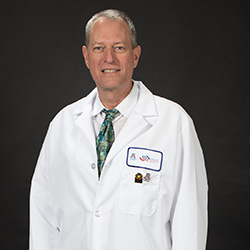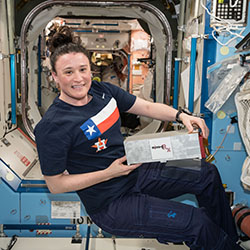
UA College Partners with Space Tango to Test Diagnostic Tool in Space

Researchers at the University of Arizona College of Medicine – Phoenix are partnering with Space Tango, a private aerospace company that designs, builds and operates facilities on the International Space Station, to develop an easy way to test astronauts’ health in space.

“This is the next step in the evolution of this technology toward use on a test flight,” Dr. Zenhausern said, referring to the “vertical flow” device, a novel technology patented and licensed by Tech Launch Arizona, which helps bring UA innovations to the world through commercial pathways.
ANBM researcher Jian Gu, PhD, an associate professor in the college’s Basic Medical Sciences Department, will work with the Kentucky-based company to integrate the diagnostic platform into Space Tango’s automated hardware.
Jana Stoudemire, director of commercial innovation at Space Tango, said the company is pleased to partner with the research team at the UA College of Medicine – Phoenix. The device will be part of a payload housed in one of its autonomous CubeLabs that can provide near real-time data and monitoring in microgravity.
“Everything in the CubeLab has to be extremely well-designed and simple to use in the contained environment of a space mission and the International Space Station,” she said.
The basic questions researchers have to answer are: How do you take a blood or saliva sample in microgravity and how is it processed by an astronaut en route to Mars?
Dr. Zenhausern said in the center’s first NASA grant, the chemistry of the device was tested for protein markers. Its application to nucleic acid detection was demonstrated under a second NASA Human Research Program grant, led by ANBM researcher Jerome Lacombe, PhD, an assistant professor in the medical school’s Basic Medical Sciences Department. This latest grant — $100,000 from NASA and its Translational Research Institute for Space Health — will pursue with Space Tango the development of the diagnostic test using a human factor engineering approach to validate its performance in microgravity.
“What is exciting is that NASA is investing more funds in space exploration and is considering human health as its first priority to succeed in long-duration missions,” Dr. Zenhausern said. “Until now, very little monitoring of the health of astronauts has occurred, but deep space travel will require cutting-edge technologies for astronaut health and performance.”
Recent news about the health of U.S. astronaut Scott Kelly, who spent a year at the International Space Station in the confines of microgravity, have questioned the promise for long-term space travel. Other reports earlier this year that space flight could activate dormant viruses like shingles, chickenpox and herpes heighten the importance of developing ways to monitor and treat health conditions of astronauts in space.
Leroy Chiao, PhD, a former NASA astronaut, International Space Station commander and ANBM consultant, said he was not surprised by the report in March.
“We know that under stress, certain genes can turn on and off,” he said. “Your body in space is under stress, so it makes sense that the stress can cause some genes to turn on and others to turn off.”

“If this takes us one step closer to learning more about radiation resistance, that’s great,” he said.
*Astronaut photos courtesy of Space Tango.
About the College
Founded in 2007, the University of Arizona College of Medicine – Phoenix inspires and trains exemplary physicians, scientists and leaders to advance its core missions in education, research, clinical care and service to communities across Arizona. The college’s strength lies in our collaborations and partnerships with clinical affiliates, community organizations and industry sponsors. With our primary affiliate, Banner Health, we are recognized as the premier academic medical center in Phoenix. As an anchor institution of the Phoenix Bioscience Core, the college is home to signature research programs in neurosciences, cardiopulmonary diseases, immunology, informatics and metabolism. These focus areas uniquely position us to drive biomedical research and bolster economic development in the region.
As an urban institution with strong roots in rural and tribal health, the college has graduated more than 1,000 physicians and matriculates 130 students each year. Greater than 60% of matriculating students are from Arizona and many continue training at our GME sponsored residency programs, ultimately pursuing local academic and community-based opportunities. While our traditional four-year program continues to thrive, we will launch our recently approved accelerated three-year medical student curriculum with exclusive focus on primary care. This program is designed to further enhance workforce retention needs across Arizona.
The college has embarked on our strategic plan for 2025 to 2030. Learn more.